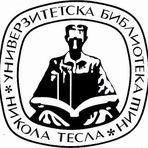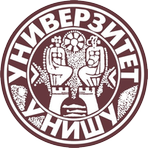Title
Razvoj postupka stabilizacije toksičnih metala iz tehnološkog procesa galvanizacije
Creator
Stojković, Ana 1989-
CONOR:
15070055
Copyright date
2024
Object Links
Language
Serbian
Cobiss-ID
Theses Type
Doktorska disertacija
description
Datum odbrane: 08.05.2024.
Other responsibilities
Academic Expertise
Tehničko-tehnološke nauke
University
Univerzitet u Nišu
Faculty
Fakultet zaštite na radu
Group
Katedra za sistemska istraživanja bezbednosti i rizika
Alternative title
Development of the procedure for stabilizing toxic metals from the technological process of galvanization
Publisher
[A. S. Stojković]
Format
150 str.
description
Bibliografija: listovi 114-150.
Biografija autora: list [155].
description
System risks and safety
Abstract (en)
According to its qualitative and quantitative properties, the technological process of galvanization is one of the most complex waste water polluters/ polluters of waste water. Polluting substances found in galvanic waste water (metal ions, cyanides, acids, bases, organic solvents, etc.) are most often removed using conventional methods (chemical oxidation and reduction, neutralization, precipitation, coagulation and flocculation), resulting in secondary contamination in the form of galvanic sludge that has been classified as hazardous waste. If it is not treated or inclined of improperly, the easily mobile metal fraction is eluted by atmospheric precipitation and pollutes the environment by being infiltrated. To support this idea, the doctoral dissertation involved the inactivation of galvanic sludge using waste industrial materials (such as cathode glass, slag from the technological process of iron production, and ash from the thermal power plant) by incorporation into a stable eco-sintered product. In the obtained product, toxic metals cannot be activated even in extreme circumstances, such as elevated temperatures, acid precipitation, as well as in acids and bases; in that way, the risk of environmental pollution has been reduced.
Authors Key words
galvanski mulj, toksični metali, stabilizacija, eko-sinterovani proizvod
Authors Key words
galvanic sludge, toxic metals, stabilization, eco-sintered product
Classification
615.9.621.793 (043.3)
621.793
Subject
Т270
Type
Tekst
Abstract (en)
According to its qualitative and quantitative properties, the technological process of galvanization is one of the most complex waste water polluters/ polluters of waste water. Polluting substances found in galvanic waste water (metal ions, cyanides, acids, bases, organic solvents, etc.) are most often removed using conventional methods (chemical oxidation and reduction, neutralization, precipitation, coagulation and flocculation), resulting in secondary contamination in the form of galvanic sludge that has been classified as hazardous waste. If it is not treated or inclined of improperly, the easily mobile metal fraction is eluted by atmospheric precipitation and pollutes the environment by being infiltrated. To support this idea, the doctoral dissertation involved the inactivation of galvanic sludge using waste industrial materials (such as cathode glass, slag from the technological process of iron production, and ash from the thermal power plant) by incorporation into a stable eco-sintered product. In the obtained product, toxic metals cannot be activated even in extreme circumstances, such as elevated temperatures, acid precipitation, as well as in acids and bases; in that way, the risk of environmental pollution has been reduced.
“Data exchange” service offers individual users metadata transfer in several different formats. Citation formats are offered for transfers in texts as for the transfer into internet pages. Citation formats include permanent links that guarantee access to cited sources. For use are commonly structured metadata schemes : Dublin Core xml and ETUB-MS xml, local adaptation of international ETD-MS scheme intended for use in academic documents.


